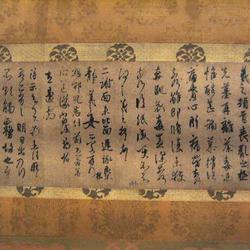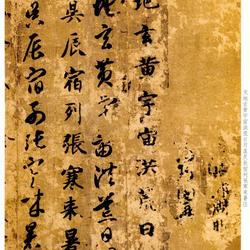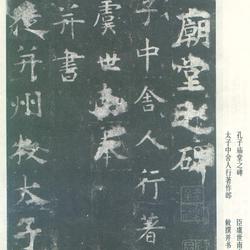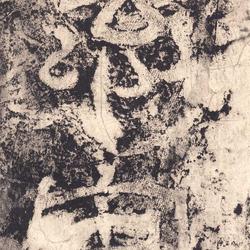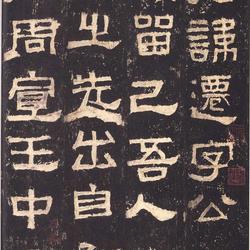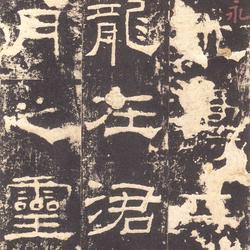Zhang Xu Kuangcao's "Four Notes on Ancient Poems" - Zhengda Weather
"Four Ancient Poems in Cursive Script"It is said to be the work of Zhang Xu and is extremely precious. Among its contents, the first two are "Buxu Ci" by Yu Xin, and the last two are "Zan of Prince Jin" and "Zan of Four or Five Young Men" by Xie Lingyun of the Southern Dynasty (suspected to be forged). The strokes throughout the text are full and there are no weak or slippery strokes. The writing is ups and downs, intertwined with movement and stillness, and the paper is filled with clouds of smoke. It is truly the pinnacle of cursive writing. Modern person Guo Zixu said: "Four Notes on Ancient Poems can be said to be the crystallization of Zhang Xu's entire life. It is a model of genius beauty and natural beauty, the essence of national art, and a symbol of eternal beauty."("Dictionary of Chinese Calligraphy Appreciation")
Zhang Xu was a famous calligrapher in the Tang Dynasty, named Bogao, and was born in Suzhou, Jiangsu Province. He was once an official, Jinwu Changshi, and he was said to have led the government to be the chief historian, and was known as "Zhang Changshi". He is good at poetry and prose, good at truth and cursive writing, and is most famous for his cursive writing. His world name is Zhang Dian, also known as Caosheng. The nephew of Yanyuan, the son of Lu Dong, his book was inherited from his uncle's family tradition. It can also be traced back to Wang Xizhi, Zhiyong, Yu and Ou. During the reign of Emperor Wenzong, Li Bai's poetry, Pei Min's sword dance, and Zhang Xu's cursive script were considered three masterpieces.
Zhang Xu's cursive script is valued by the world for its vigorous and unrestrained style, vertical and horizontal strokes and unrestrained romantic posture.
According to legend, he saw the princess fighting with the bearer and learned the meaning of calligraphy from the advocacy. When he was in Ye County, Henan, he loved to watch Gongsun (a dancer of the Tang Dynasty) dancing with the Xihe sword, and he became the god of cursive calligraphy. Yan Zhenqing resigned from office twice to ask him for advice on penmanship.
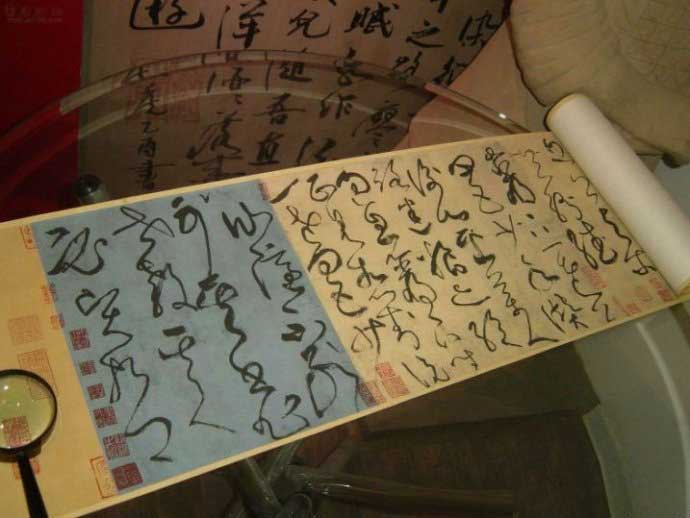
Zhang Xu used his unique cursive calligraphy style to write a total of four ancient poems by Xie Lingyun and Yu Xin, two literary giants from the Southern and Northern Dynasties, on the precious "five-color paper". The writing of the work is extremely powerful, and the strokes are full and full, with no weak or slippery strokes. The writing is gentle and free, with ups and downs, movement and stillness intertwined, rippling in a comfortable rhythm with urgency and slowness. His calligraphy is unrestrained and heroic, with continuous strokes that threaten to fly over eaves and walls, and the paper is full of clouds and smoke. It is truly the pinnacle of cursive writing. The beauty of cursive writing actually lies in the fact that it can be done easily and in one go, giving people a sense of joy.

"Four Ancient Poems in Cursive Script" is collected by the Liaoning Provincial Museum, ink-printed, five-color paper, in cursive script. The length is 28.8 cm and the width is 192.3 cm. There are forty lines and one hundred and eighty-eight words. There is no money. Dong Qichang of the Ming Dynasty was designated as Zhang Xushu.
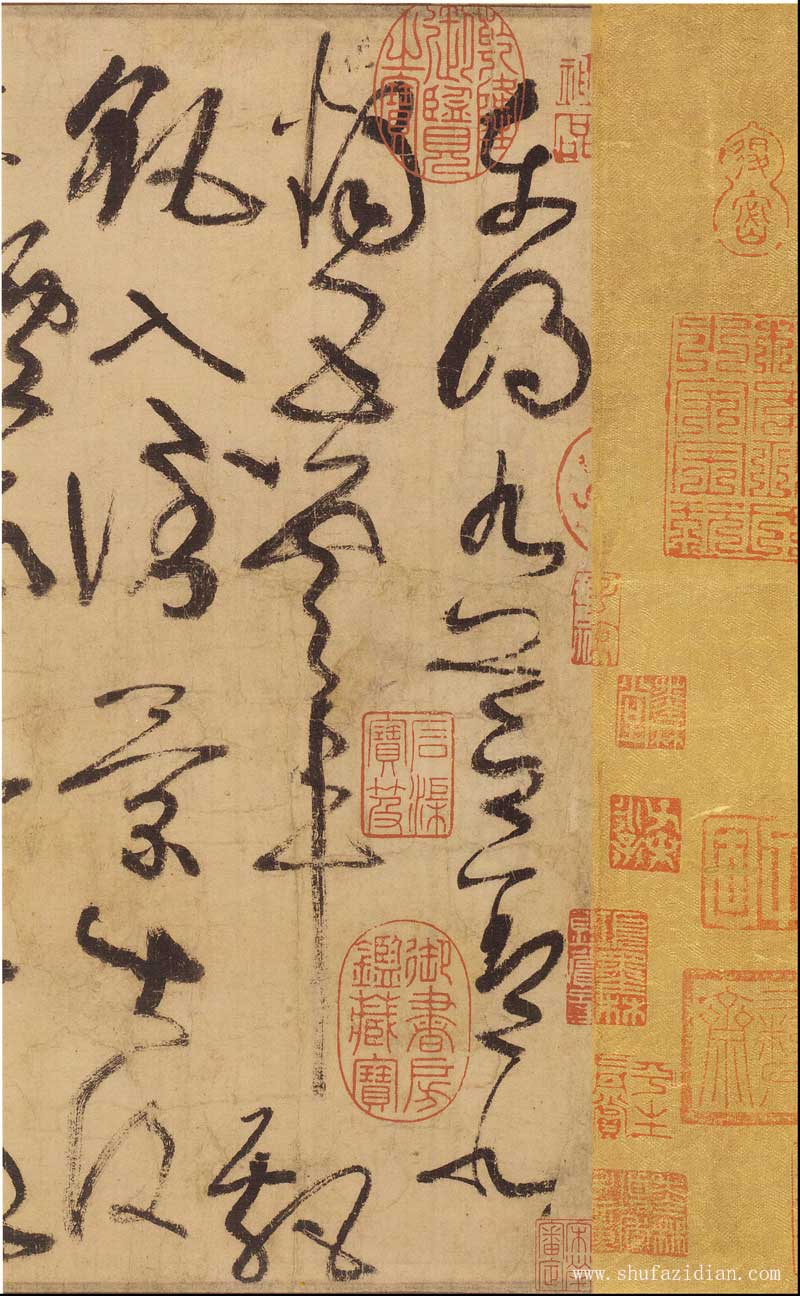
The Jiuzhi cover is in the East Ming Dynasty, and the Five Cloud Cart is the candle in the North. Floating into the reverse scene, disappearing and disappearing
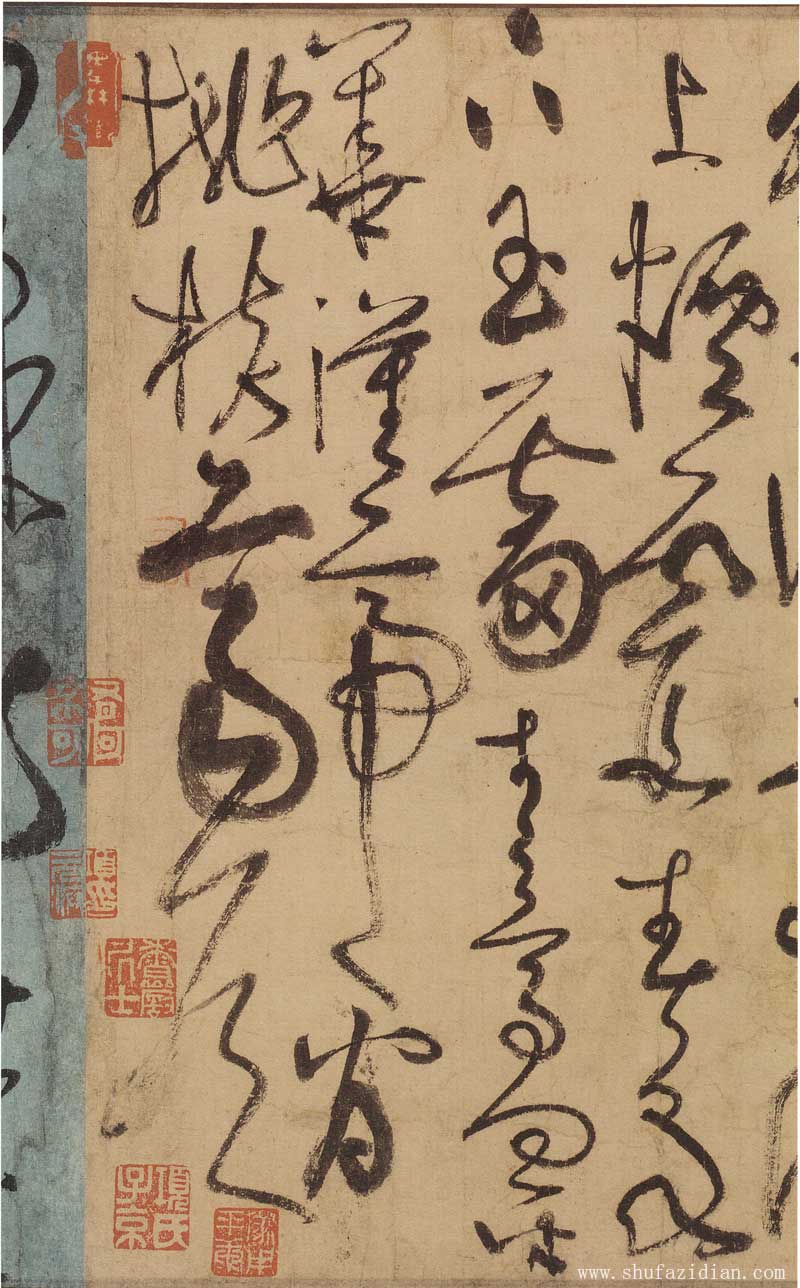
On the haze. Jade slides under the spring spring, and blue birds fly toward the golden flower. The Emperor of Han looked at peach stones, and the Marquis of Qi
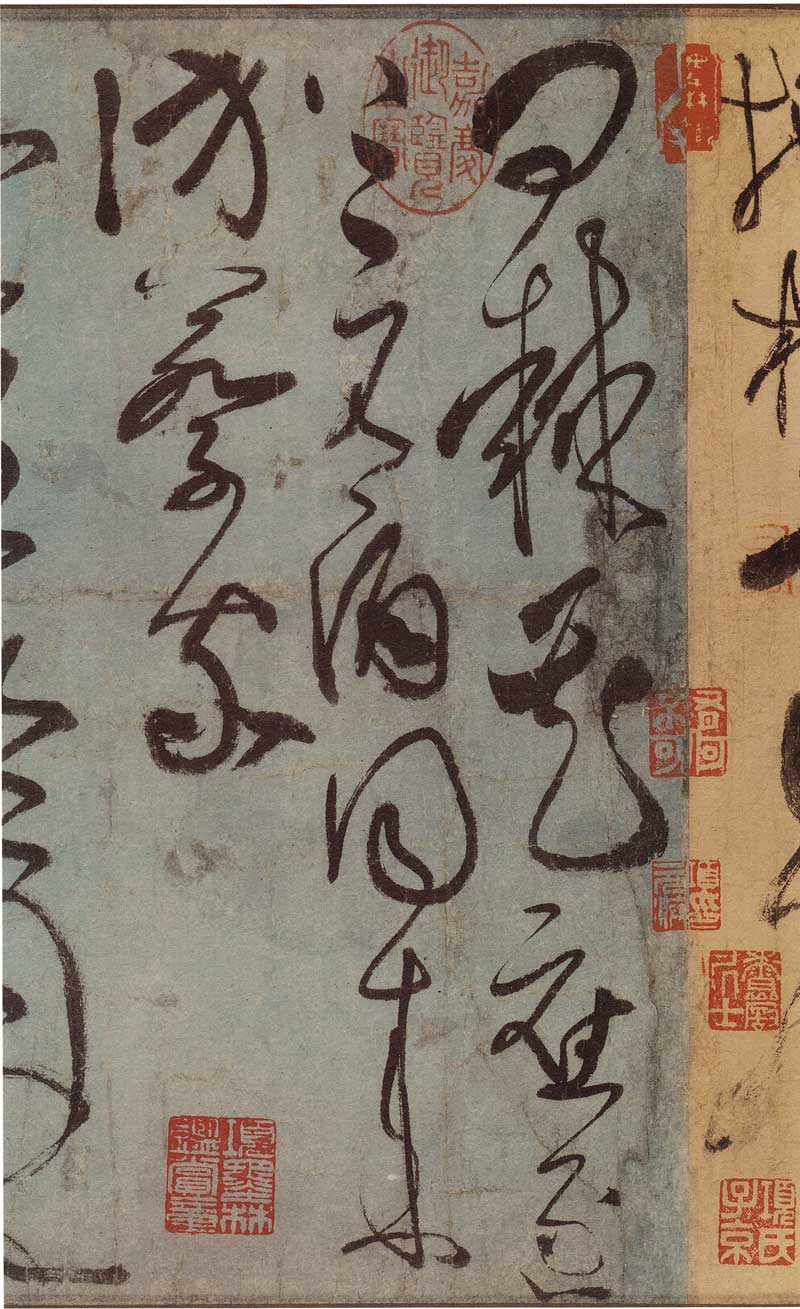
Ask about the thorn (the original poem is jujube) flower. We should go to Yuanjiu and visit the Cai family together.
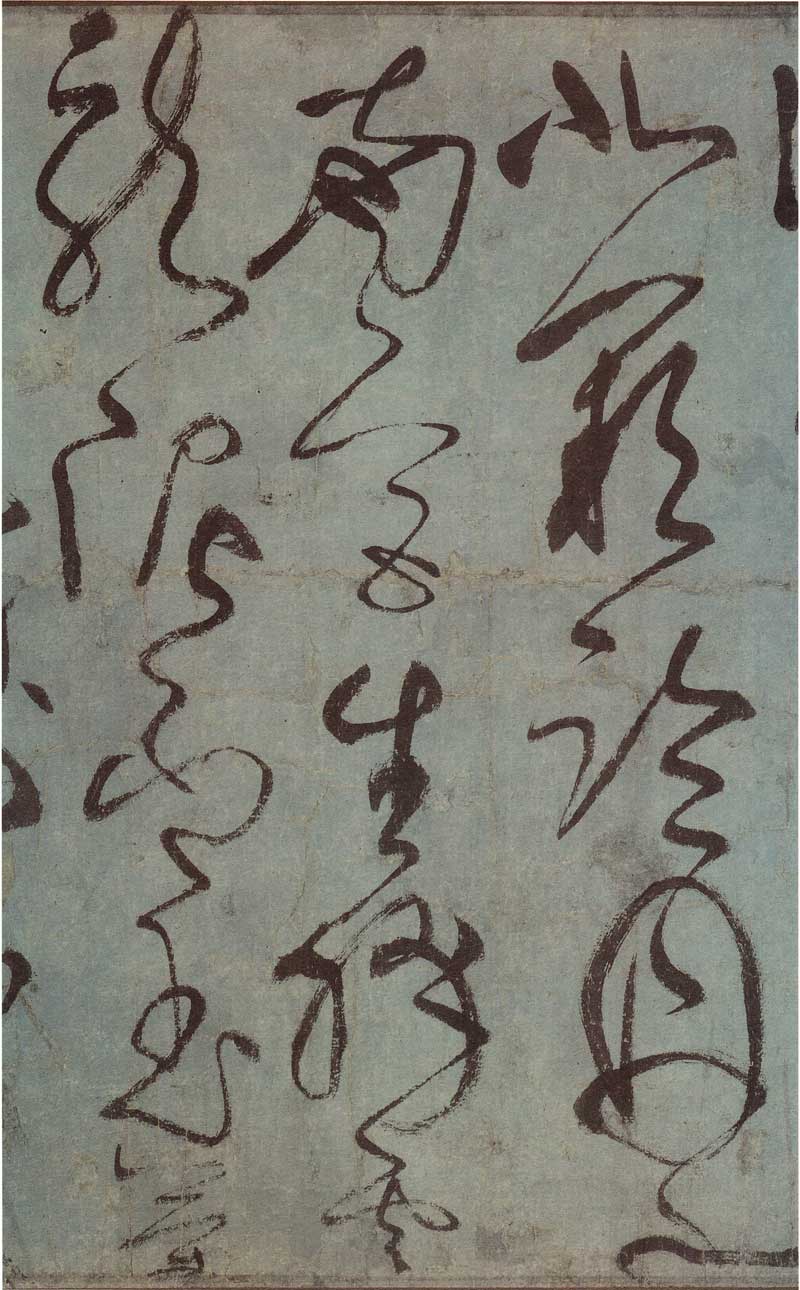
The North Palace is adjacent to Danshui, and the South Palace is surrounded by Jiangyun. Dragon mud seal jade slips(original poem for policy)
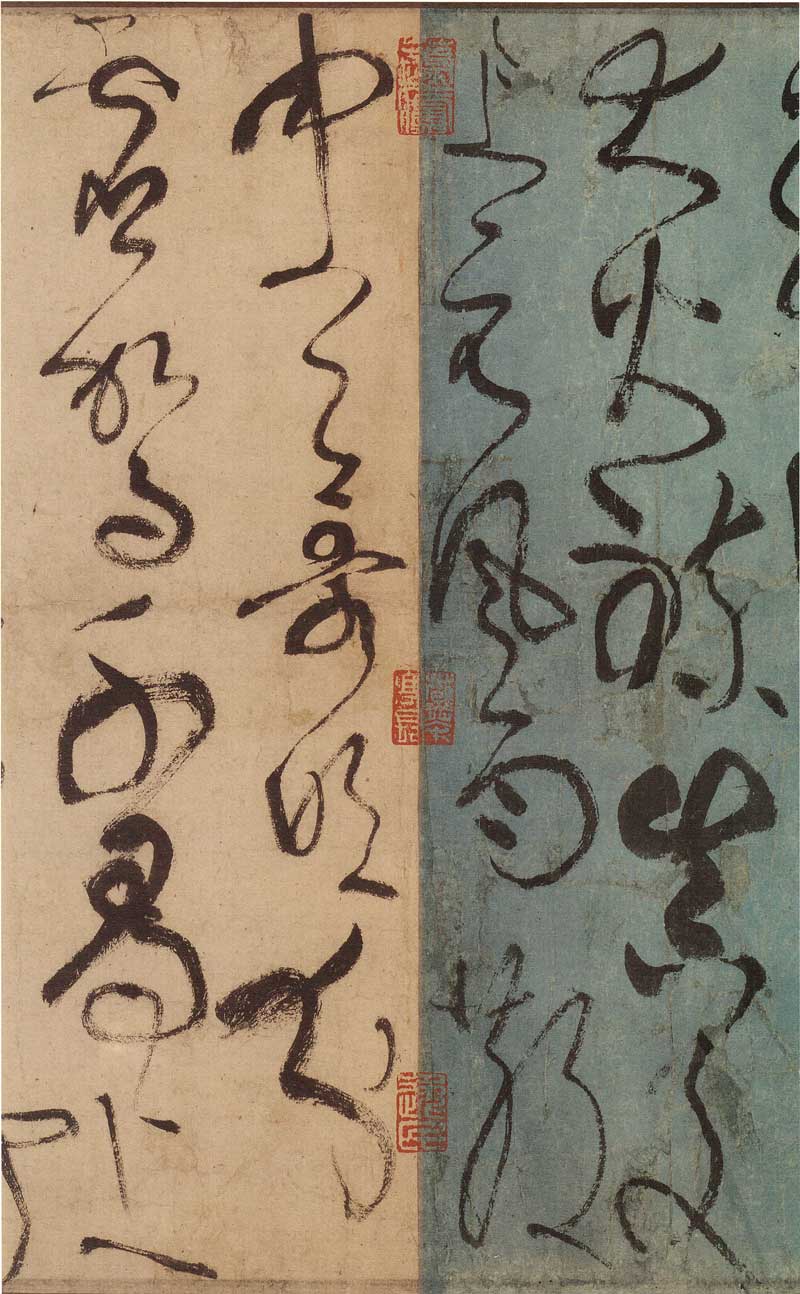
Practice real writing under fire. The wind and rain of Shangyuan have dispersed, Brother Zhongtian(The original poem is a song)Blow points. Xu (original poem is spirit) rides on Qianxun
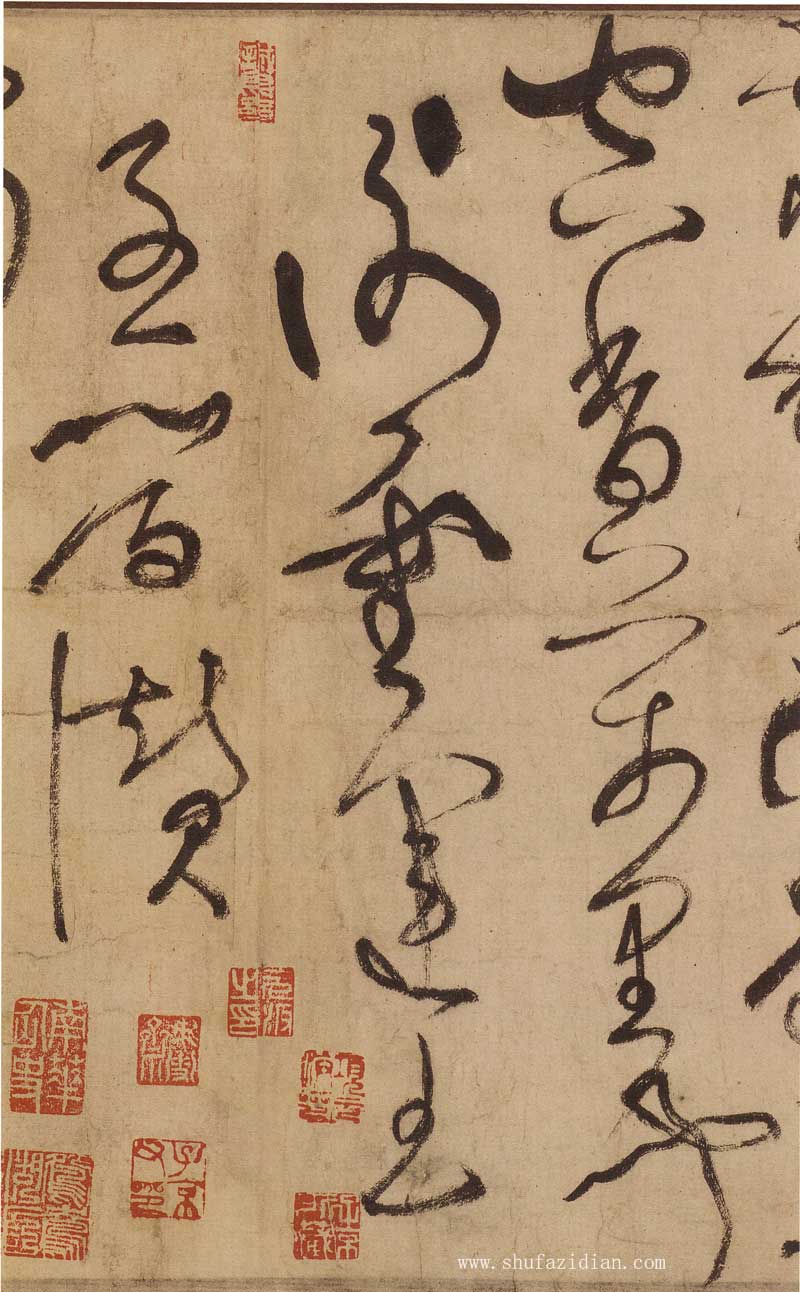
The fragrance can be smelled thousands of miles away. Xie Lingyun Prince Jinzan
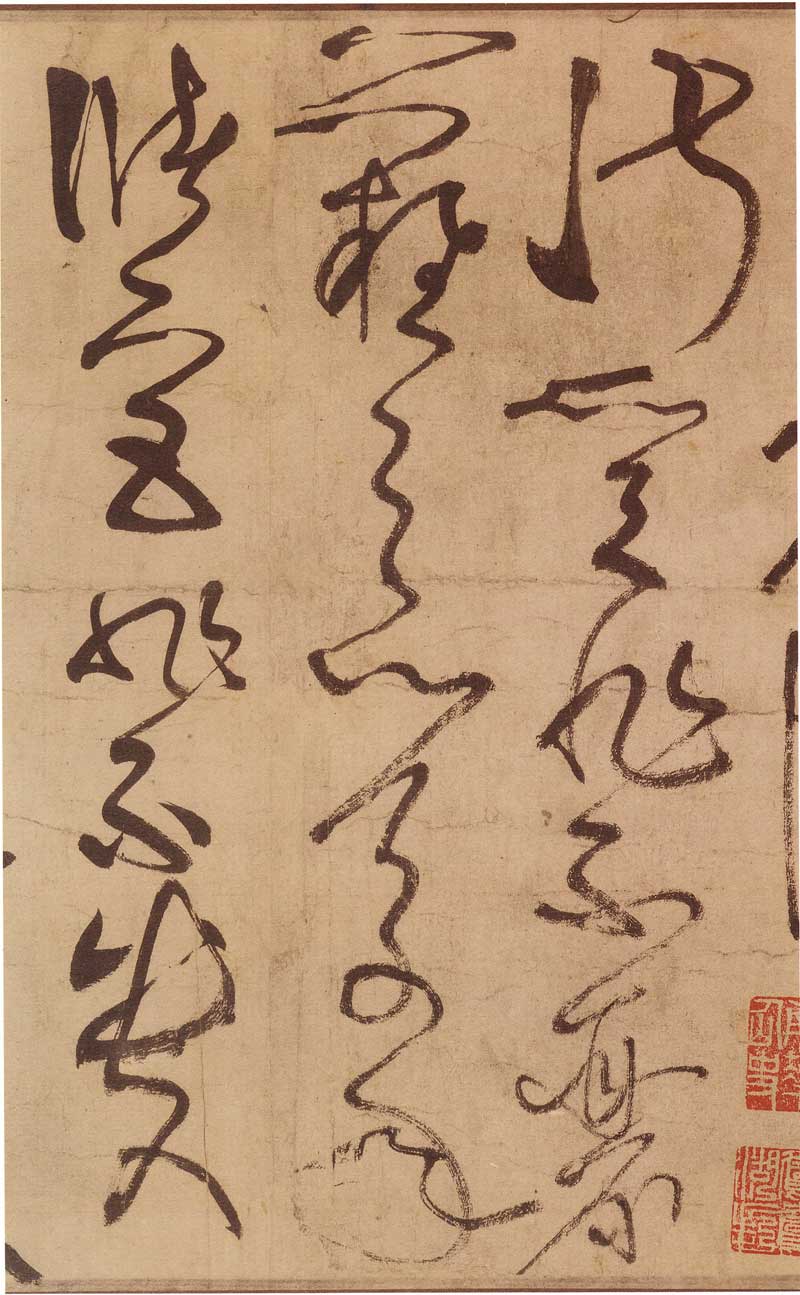
Good quality is not inferior to beauty, and it will be difficult to survive for thousands of years. The Crown Prince is not cheap
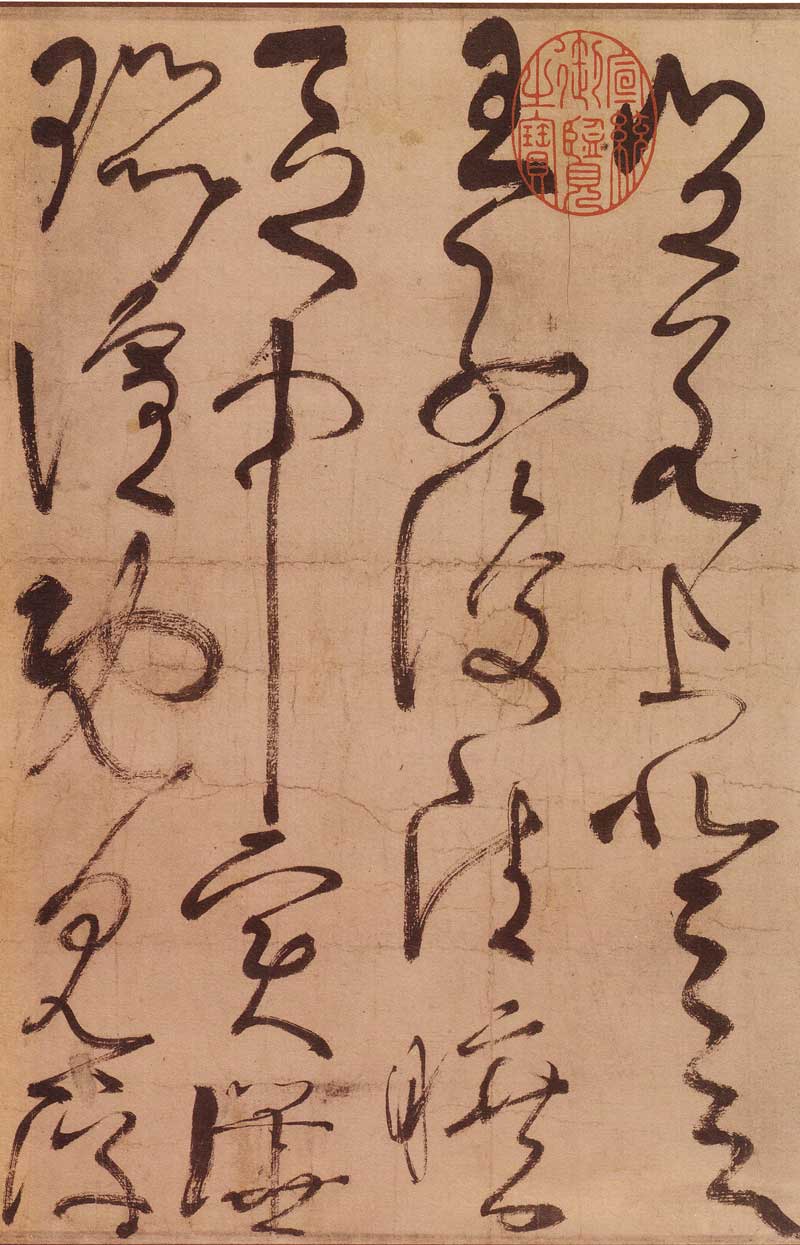
How can it be like going to heaven? The prince returned to Qingkuang, and there was a real uproar in the area. Noisy and floating
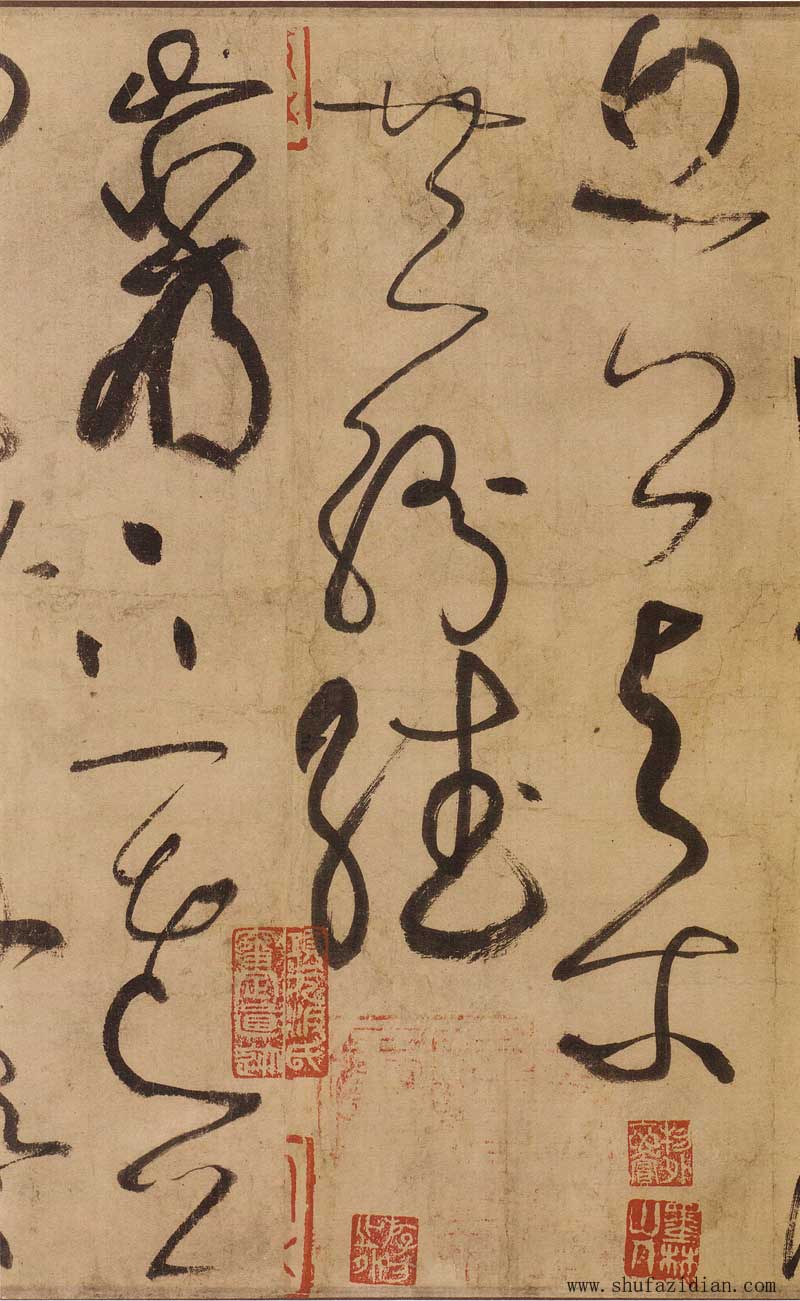
Mr. Qiu, I will be with you. Iwashita's husband
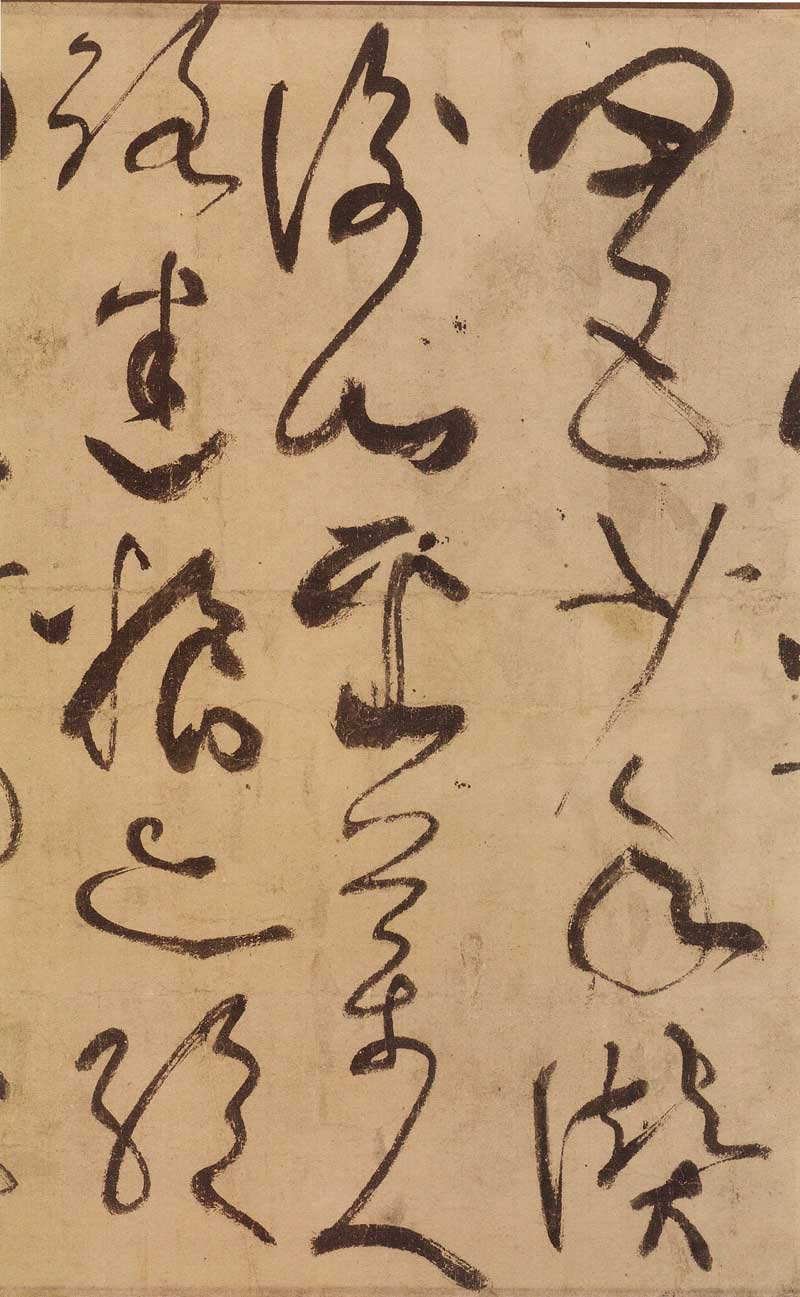
The four or five-year-old boy praised the medicine collector in Hengshan. He lost his food even if he lost his way.
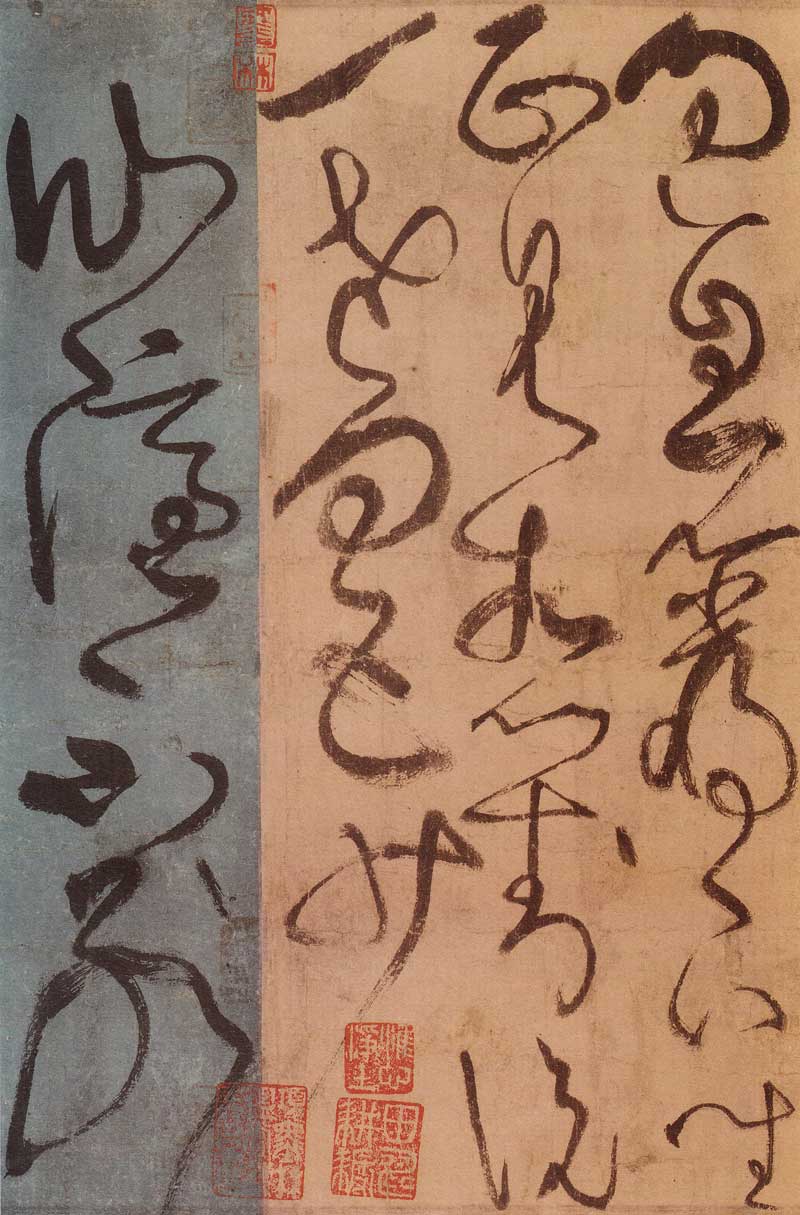
I sat down under the Shiyan Rock and talked about the correct views. One old, four and five young, the immortals are not hidden
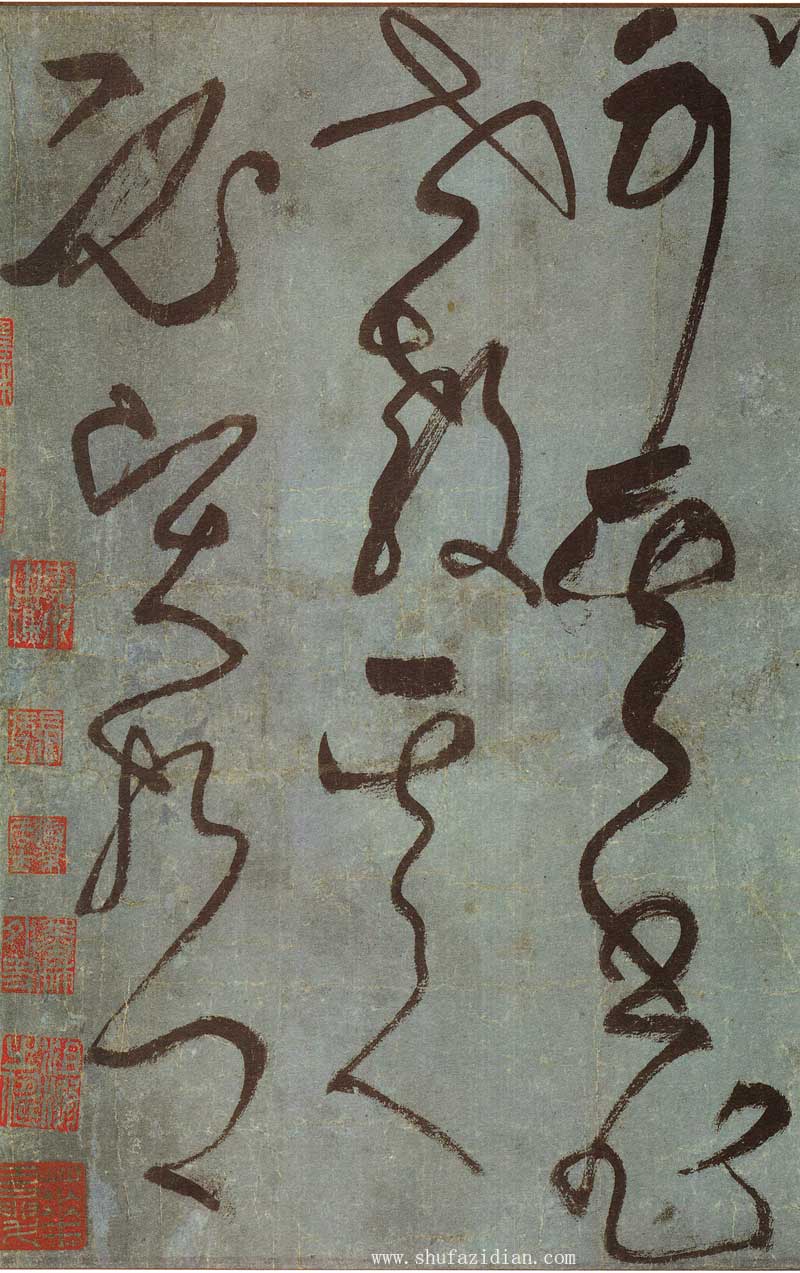
Can't do it? His books are not worldly teachings, but his people must be sages.
Explanation:
The first two poems are from Yu Xin's "Buxu Ci":
The Jiuzhi cover is in the East Ming Dynasty, and the five-cloud car is candlelight in the North; it drifts into the reverse scene and disappears into the haze. Jade slides under the spring spring, and blue birds fly toward the golden flower. The Emperor of the Han Dynasty looked at the peach stones, and the Marquis of Qi asked about the jujube flowers; in the Yuan Dynasty, he sent wine to Cai Jing's house.
The north pavilion faces Xuanshui, and the south palace sits on Jiangyun; the dragon mud seals the jade slips (the original poem is the policy), and the sky fire practices the true writing. In the Shangyuan Dynasty, the wind and rain dispersed, and Brother Zhongtian (the original poem was a song) blew the wind; Xu (the original poem was a spirit) came up Qianxun, and the fragrance in the sky was smelled thousands of miles away.
The last two poems are "Prince Jin Pian" and "Four or Five Young Men" by Xie Lingyun of the Southern Dynasty (suspected to be fake):
[Thanks to Prince Lingyun for his praise] Good quality is not bad, but it will be difficult for thousands of years. The Imperial Palace is not cheap, how can it be as high as heaven? The prince returned to Qingkuang, and there was a real uproar in the area. When Xuan saw Duke Fuqiu, he and you turned over it together.
[Praise from Yanxia Husband, a young man of 4 or 5 years old] Hengshan’s medicinal collectors are also good at finding food if they get lost on the road. I sat down under the Shiyan Rock and talked about the correct views. One old, four and five young, why don't you say goodbye to immortality? His books are not worldly teachings, but his people must be sages.
The artistic characteristics of "Four Transcripts of Ancient Poems"
The following is an analysis and introduction to the artistic characteristics of "Four Calligraphy of Ancient Poems" from four aspects: brushwork, calligraphy, composition and artistic style.
1. Characteristics of calligraphy
① Side stroke center: This is the most fundamental content of Zhang Xu’s inheritance of Wei and Jin brushwork.
②Seeking smoothness in the midst of hesitation: When you open "Four Posts on Ancient Poems", the first thing you see is unrestrained and smooth. But if you look closely at every stroke, many of them are slow and dignified. The biggest difference between Zhang Xu’s Kuangcao and Wang Xizhi’s Jincao is that the creative style has changed. Wang Xizhi is elegant, while Zhang Xu is romantic. Elegant and rational, romantic and emotional.
③ Flexible and changeable.
④ Unbridled and continuous: This is the most obvious feature that distinguishes Zhang Xu Kuangcao from his predecessors. Kuangcao wants to highlight the word "kuang". What is "kuang"? The "madness" of Kuangcao is not craziness, eccentricity, arrogance and madness, but a kind of elegance, chicness, unrestrainedness and heroism in the author's psychology.
2. Characteristics of calligraphy
Calligraphy can simply be explained as the method of tying words. Since ancient times, calligraphy has been regulated and changed. There are two points of standardization: First, from the beginning of writing, each character has an original glyph formed by the number of strokes, pictography, and freehand brushwork. This is the basis of calligraphy for the next two thousand years. The second is the change of conventional glyphs formed by the influence of writing habits and aesthetic pursuits during the evolution of fonts. These often require rote memorization.
Change is the reason for the formation of calligrapher's creative style. Changes occur on the basis of norms. For example, some people mainly write flat characters, and some people mainly write long characters; some people like to write compactly, and some people like to write open characters; some people are accustomed to writing in the upper right, and some prefer the lower right. Broad. For the study of calligraphy, "Four Notes on Ancient Poems", a Kuangcao work, is highly representative.
① Proficient in grass law:草法精熟是狂草书家的共同特点,然而张旭草法的精熟又在古今众多狂草书家之上。以《古诗四帖》为例,首先,作品中所有文字均为纯正的草书,没有一个行书。清一色的草书很大程度上增加了作品创作的难度,这一点古今草书家很少有人能做到。第二,此帖草法和书写的熟练程度以及表现上的写意程度也达到了前无古人的高度。沈鹏先生常说,写草书的人要进入狂草。什么是进入狂草?就是一定要写出纯正的草书的感觉。张旭的《古诗四帖》之所以感人,之所以能给人以耳目一新的震撼,其根本原因就在于他写出了纯正的与所有今草作品都截然不同的狂草气息。
②结字高古:对于结字方面,张旭的成绩是惊人的。尽管他在书写之中任情挥洒,但我们仔细分析《古诗四帖》中的每一个字,无不合于古人结字之法。
③字体宽博:宽博才会大气,宽博才能雄浑。古人把高境界的书法作品称为“逸品”,象征魏晋风度的词叫“晋世清韵”,晋世清韵的核心内容是“雅逸”。什么是逸?逸是自由、散淡,是潇洒、随意。没有宽博就无所谓“逸”。张旭抓住了这个问题的根本。
④因势成形:在《古诗四帖》中,严格按照古法造字是张旭结字的基础,因势成形也是它的一个重要特色。狂草书写上的随机性和章法上的丰富性,增加了书写环境的复杂性,为结字提出了难题。在构字上既有创造矛盾、任情恣肆的自由,又有解决矛盾、填补均衡的无奈。因此,因势成形成为《古诗四帖》重要的结字特点。
然而,谈到因势成形,有一点一定要明确,那就是因势成形所成的“形”必须是美的,必须是字法上合乎规范的。长要长得合理,短要短得合法;正要正得出新,歪要歪得规范。在这个问题上许多学书者都有误区,认为草书创作是看大效果,单个字没写好是因为环境使然。这是大错特错的。任何章法环境都不能成为我们写不好一个字的理由。整体上看既变化丰富又和谐完整,单剪下每一个字又都要经得住推敲,经典耐看,甚至都能放到《草书大字典》中供专家研究,供后人摹写。这一点我们从《古诗四帖》中得到了深刻的体验。
3.章法特点
①自然疏密,没有刻意雕琢。这是张旭书法的特点,也是几乎所有古代书家共同的特点。张旭不在章法上刻意地经营空间,而是讲究自然书写,自然疏密,浑然天成。我认为最好的狂草作品不应该是设计出来的,而应该是“碰”出来的。没有设计、没有经营,只想表现一种感觉、一种思想。沿着这种感觉任情恣肆,完全靠下意识去写(平时的规范都化作了下意识),而写出的结果却“嬉笑怒骂皆文章”。一切奇情迭出,又一切合理合法。对于这一点,《古诗四帖》给了我们很好的印证。
②分区域、分段落有不同的风格韵律。《古诗四帖》虽然没有从空间上进行人为的设计,但并没有因此而减少它在章法上的丰富性。一个十分明显的特点就是,随着作品内容和作者创作情绪的延伸变化,而表现出成片的、丰富的风格韵律变化。这些由于线条质感、书写速度等因素形成的变化,是自然递变、浑然天成的。
③拉近行距,实现“隔行通气”。大草作品更强调章法上的整体性,虽然仍以行为书写单位,但行与行之间没有联系的草书作品不能成为优秀的作品。如何使行与行之间相互关联,成为相互作用的整体,这是古今狂草书家都面临的一个难题。一幅狂草作品,如果说第一行可以随意写,第二行就不行了;第二行要观照着第一行来写,要努力做到两行之间既变化又和谐;而第三行不仅要看第二行,还要观照第一行;第四行要观照前三行。这就是为什么纵幅的书法作品大家多愿写三行、两行的,而不愿意写多行的原因。为解决这一问题,《古诗四帖》用了一个极其巧妙的方法,那就是拉近距离,有些段落几乎到了横无行、竖无列的程度。
④上下错落,活跃氛围。在书法学习上,自古就有“五年上齐,十年下齐”之说。说的是写一篇字,要做到上边线齐和下边线齐是很不容易的。而过去人们写字多为小字楷书、行书,一页纸要写很多行,上下不齐就不能做到端庄精美。这一原则至今仍然是我们书写章法的基本准则。然而,在《古诗四帖》中,张旭打破了这一规范。在这样一幅不算太长的手卷中,出现了多处上下不齐的现象。这是为什么?原因是狂草这种书体具有不同个性。在狂草作品中,字形灵活多变,字体时大时小,字势欹正相间,动荡多变的章法局势使上下不齐成为了一种自然的必然。有了这几处错落,章法气势在规整之中便多了几分活跃。反之,没有这几处错落,整件作品会立即显得生硬刻板。
4.风格特点
“正大气象”是《古诗四帖》风格上的最大特点。
“正”是什么?“正”的重要含意是法度严谨。过去我们形容“正大气象”还有一个词语,叫做“庙堂气象”。“庙堂”代表皇家,代表国家。能够代表国家或者说具备国家级水平的东西,必须有严格的规范性,法度严谨才能传之四海。例如学习篆书,篆书碑帖就有皇家和民间之别,学习时必须有所区分。如果上手就写《散氏盘》等民间作品,写出的篆书就很难有规范性。
The meaning of "big" refers to being majestic and majestic, which is easy to understand; secondly, it refers to being mainstream and taking the big road, being neither biased nor weird in style, and consistent with the universality of aesthetics. There is a concept in art appreciation called "appreciation of both refined and popular tastes". What is elegance and vulgarity? That is, one person's works have a wide audience, and most people think they are good and can accept them. This shows that there are commonalities in aesthetics, that is, there are some things that everyone thinks are good. Calligraphers must find this universal thing and write it into their own works. Only in this way will your work resonate with more people. Magnificent beauty, elegant beauty, and substantial beauty are all universal beauties; withered beauty, delicate beauty, incomplete beauty, absurd beauty, and weird beauty are all special beauties.
Although "Four Calligraphy of Ancient Poems" is a cursive work, it strictly adheres to the traditional writing method. From the brushwork to the calligraphy, it is in the same vein as the orthodox cursive script of the Wei and Jin Dynasties. Moreover, in terms of style, it is wild but not wild, wild but not strange, insisting on the right and seeking change, thereby creating a noble quality characterized by its own upright atmosphere in art.
Anyone who has in-depth practical experience in calligraphy knows that it is the most difficult to maintain an upright style and at the same time write a taste of the work. It is much easier to write a little crookedly, a little strangely, and a little interesting. It is for this reason that works that take the right path, take the high road, and adhere to an upright atmosphere are more valued by people. Among the cursive inscriptions in ancient times, "Four Inscriptions on Ancient Poems" is the most difficult. The reason lies on the one hand because of its superb technique, and on the other hand because of its insistence on uprightness.

